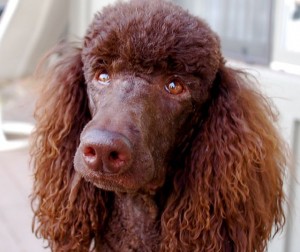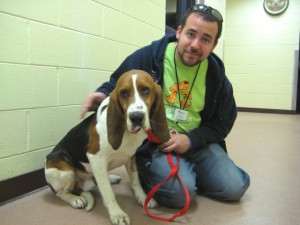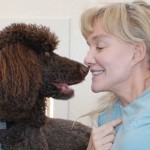Let’s begin with two little exercises.
1. Copy and paste the following sentence into your word processor, then run your “grammar checker”:
“The dog who ran outside to play in the snow yelped with delight.”
I’m running Microsoft Word 11.3.5 and here’s what the grammar checker told me to do: Change “who” to “that.”
I’ll come back to that that later on. Let’s move on to our next exercise.
2. Following are two sentences. Rewrite the second sentence replacing the words in bold type with other words, not proper names, without changing the meaning of the sentence:
“Tom has a new dog. Tom has named the dog Max and Tom lets the dog sleep by Tom’s bed.”
Did you rewrite it the ‘proper’ way? This way?: “Tom has a new dog. He has named it Max and he lets it sleep by his bed.” (Reference Wikipedia.)
Or, did you rewrite it like I did, and, as I believe Jane Goodall would have. (You’ll see why in a moment.): “Tom has a new dog. He named him Max and lets him sleep in his (Tom’s) bed.“
I don’t care what my grammar checker told me to do, I’m not switching “who” to “that.” And I don’t give a damn if “it” is the proper way to refer to a dog. I’m not going to do it.
Why not? Well, I was about to launch into what I’m sure would have been a way-too-lengthy discourse about how traditional English language use “thingifies” non-human animals, in particular dogs, when I stumbled upon this:
In her 1990 book Through a Window, Jane Goodall (www.janegoodall.org) writes that although scientists have long accepted that humans and other animals share physical characteristics, acceptance by scientists and the general public of nonhuman animals as individuals with feelings, as sentient beings, has been slow and grudging. In the early 1960s, when Goodall started her research with chimpanzees in Africa, scientists in her field gave numbers, not names to the chimpanzees they were studying. When Goodall submitted her first scientific paper for publication, it was returned to her by the editor to be amended. In every place where she had written he or she to refer to chimpanzees, the words had been replaced with it. Similarly, every who had been replaced with which. In an effort to rescue the chimpanzees from ‘thing-ness’ and restore them to ‘being-ness,’ Goodall stubbornly changed the words back and, in the end, won a small battle in what was to be an ongoing struggle to tear down, one by one, some of the bricks in the wall of superiority that humans had built to separate themselves from other animals. (Reference George Jacobs.)
Exactly. Language matters. A lot. And, it’s implications are legion.
Now I’m guessing that a few of you, maybe more, are catching a whiff of the dreaded “anthropomorphism,” you know, that totally “unscientific,” “non-objective,” creepy-to-some thing we do with non-human animals when we attribute assumed human qualities, motivations, and emotions to them.
Well, anthropomorphism has been on my mind. It’s a slippery and controversial concept without an agreed-upon definition. Think about it. How do you know anthropomorphism when you see it? One person’s anthropomorphism is another’s “is-ness.” It’s just what is. I love all the confusion and controversy. So, I’m planning a series of posts under the rubric: “Anthropomorphism: The good, the bad, and the ugly.”
This is my first salvo in the “good” category.
Tags: Anthropomorphism, her-him-it, Jane Goodall, Language, Pronouns and animals, Relative pronouns and animals, she-he-it, Who-which-that













